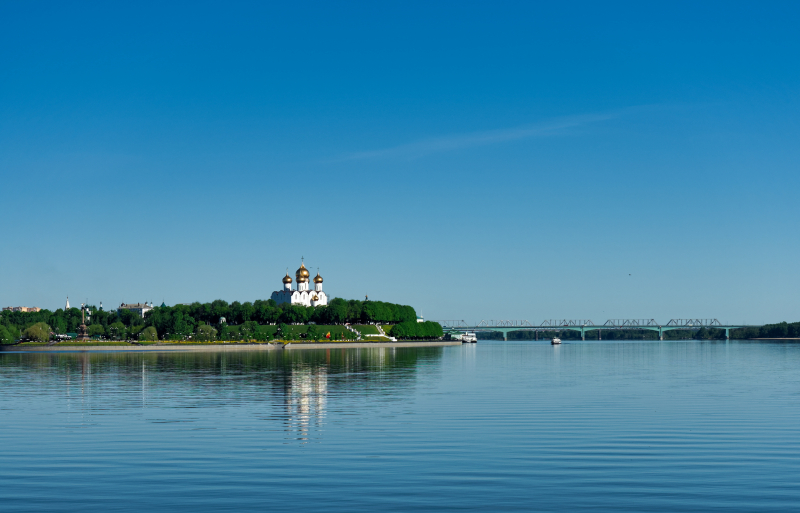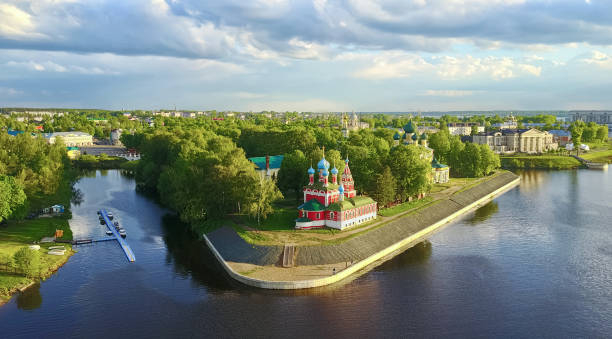Volga River

From its source to its outlet in the Caspian Sea, the Volga River is the world's 18th longest, stretching 3,530 kilometers. It is the world's longest river, running into the world's largest closed basin, the Caspian Sea. Its source, the Valdai Hills in Tver Oblast, is 228 meters above sea level, whereas the Caspian Sea is 28 meters below sea level.
By drainage basin and discharge, the Volga River is Europe's greatest river. Its drainage basin, which is nearly entirely in Russia, covers most of European Russia and houses the majority of the country's population, spanning 1.36 million square kilometers (the world's 15th largest drainage basin). The drainage basin is divided into four geographic zones; marshy forest, forest-steppe, steppe, and semidesert lowlands.
The Volga emits an average of 8,060 cubic meters of water each second, or around 250 cubic kilometers of water per year. The river does, however, have a maximum discharge of 48,500 cubic meters per second. The Oka, Sura, Kama, and Veltuga are among of the Volga's major tributaries. The Volga River delta is Europe's largest estuary, stretching 160 kilometers and containing over 500 minor rivers.
The Volga River Delta, located at the river's mouth, is a diverse habitat with 430 plant species, 127 fish species, 260 bird species, and 850 aquatic invertebrates, as well as a high number of insect species. The marshes of the Volga Delta are home to many migratory species, including Dalmatian pelicans and great white egrets. Sturgeons, Volga lampreys, whitefish, and herrings are among the fish species found in the river.
Length: 3530 km









